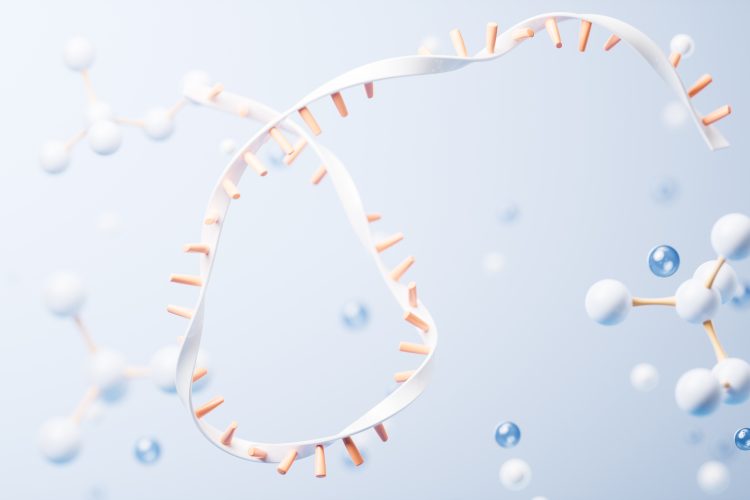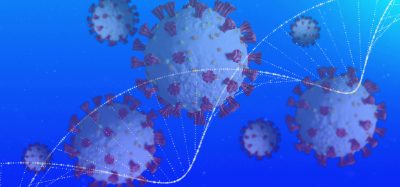Circular RNA technology: the future of gene therapy
Posted: 13 November 2025 | Drug Target Review | No comments yet
Pioneering circular RNA could redefine what the future of gene therapy looks like. Erik Digman Wiklund, CEO of Circio, shares how his company’s platform is enhancing gene expression and tackling toxicity challenges through smarter design and scientific collaboration.


Not many biotech leaders can claim to have been instrumental in developing the technology that is at the core of their organisation. Erik Digman Wiklund, CEO of Circio, is one of them. With a background in molecular biology and early academic work on circular RNA, he has guided the company from scientific discovery to commercial development.
Circio is now developing first-in-class expression technology that utilises circular RNA to enhance the gene expression level and durability from viral and non-viral vectors, with potential to substantially enhance on current gene and cell therapy approaches.
Having personally contributed to the first published papers on circular RNA, Wiklund has a deep connection to the field. “I was part of the group that did the early work on human circular RNA and co-authored the first publications in this space with our CTO Dr Thomas Hansen,” said Wiklund. “That creates also a bit of a founder story – the Circio team are actually co-discoverers of the field.”
A young but rapidly growing field
Although circular RNA has attracted growing attention in recent years, the field remains in its early stages compared to more established RNA-based platforms such as mRNA.
Although circular RNA has attracted growing attention in recent years, the field remains in its early stages compared to more established RNA-based platforms such as mRNA.
“It’s still very new technology,” Wiklund explains. “The first companies emerged only about five years ago, and the first programs are just now beginning to enter the clinic.”
As these early-stage projects progress, developers are focused on refining and optimising their designs and manufacturing. Wiklund believes RNA-based therapeutics will soon play a central role across a broad spectrum of medical applications. “Both linear and circular mRNA is going to be an important component of multiple therapeutic strategies,” he says. “It just happens that the first to advance are vaccines and in vivo CAR approaches.”
Comparing circular to conventional linear mRNA in therapeutics
While conventional linear messenger RNA (mRNA) has already proven its value through the success of COVID-19 vaccines, circular RNA promises higher and longer-lasting expression and potentially improved stability. However, the advantages of circular RNA may depend on the therapeutic context.
Circular RNA differs from traditional mRNA in that it forms a closed-loop structure, which makes it less susceptible to degradation by cellular enzymes. This structural stability allows for more sustained protein production, reducing the need for repeated dosing in certain therapies.
While conventional linear messenger RNA (mRNA) has already proven its value through the success of COVID-19 vaccines, circular RNA promises higher and longer-lasting expression and potentially improved stability.
Researchers are now exploring how this feature could benefit a range of applications, from gene replacement therapies to immuno-oncology, though the optimal design and delivery strategies are still being investigated.
Many biotech firms are now exploring both circular RNA and linear mRNA to determine which performs better in vivo. “They’re mostly going after the same targets… using either circular or linear mRNA,” Wiklund explains. “So, there you’re probably quickly now going to get a head-to-head comparison in the clinic between the two approaches.”
However, he remains realistic about where circular RNA offers the clearest advantage. “Synthetic LNP-formulated circular RNA offers a likely clear advantage for vaccine applications, but I’m less convinced that this format will confer a substantial advantage over mRNA for in vivo cell therapy applications,” he said. “mRNA will express for a day or two in a therapeutic setting; a synthetic circular RNA extends that to about a week. Whether that makes a difference in the context of in vivo cell therapy is less obvious, as opposed to a vaccine where having a more stable product that delivers antigen exposure for a few more days may be a game changer.”
Building on early success: Circio’s research pipeline
Circio’s circular RNA expression technology is now transitioning from AAV and DNA proof-of-concept studies in healthy tissues to targeted disease applications, having already shown promising improvements in protein expression in the heart, eye and spleen of healthy animal models.
Now their development will be focussed on understanding where circular RNA offers the most significant benefit. “The next step for us is screening more tissues to identify all the situations where circular expression RNA is better,” Wiklund explains. “CNS and muscle tissue are our two next ones that we’re working on at the moment.”
Circio’s circular RNA expression technology is now transitioning from AAV and DNA proof-of-concept studies in healthy tissues to targeted disease applications.
Alongside these studies, Circio is continuing to advance its circVec platform technology. The company is currently testing a next-generation version in animal models to assess whether it offers greater potency and could replace the existing platform in future development.
Once tissue validation is complete, Circio plans to move into disease-specific models. Building on the positive heart data, they plan to assess whether circVec-based AAVs can deliver similar therapeutic benefits in mice at 10-100x lower doses than conventional AAVs. Demonstrating efficacy at reduced dosing could make future therapies safer, more cost-effective and help to overcome one of the major challenges currently facing gene therapy.
Collaboration as the catalyst for progress
For Circio, partnerships are a strategic priority, with collaboration essential for accelerating the translation of circular RNA into real-world treatments. “We are very keen to form collaborations with partners that have complementary technologies, such as targeted engineered AAV capsids and novel ex-liver nucleic acid delivery systems.” Wiklund says. “We’re trying to make R&D collaborations with companies that are interested in and have models in specific diseases of interest, currently with a focus on heart, eye and in vivo cell therapy as this is where we currently have the strongest indications of circVec delivering a substantial advantage. There are many companies working on AAV capsids that are targeting the relevant tissues and cell types, and we aim to initiate collaborations to test several of these with circVec during 2026.”
We are very keen to form collaborations with partners that have complementary technologies, such as targeted engineered AAV capsids and novel ex-liver nucleic acid delivery systems.
By combining targeted delivery vectors with Circio’s circular RNA expression system, Wiklund believes it may be possible to dramatically improve both precision and potency of AAV gene therapy. “It could be really powerful to combine these complementary approaches – their targeting capability boosted by our circular RNA expression system – the result can become a more specific and potent gene therapy,” he says. “MaybeIf it works as expected, one could enable a hundredfold dose reduction and really start improving the toxicity and cost profile. This could be a game-changer for AAV gene therapy.”
A platform with transformative potential
Although still in its early stages, Circio’s circVec platform represents a potentially transformative moment in the design of gene and cell therapies. By extending expression durability, improving targeting and enabling safer dosing, the company aims to address some of the most persistent challenges in the field.
For Wiklund, the work is both professional and personal – a continuation of the scientific journey that began with the discovery of human circular RNA in the late 2000s. Looking ahead, he remains focused on advancing that vision.
“More tissues, next-gen design and validation in disease models – these are the major milestones we’re focusing on in the next 6 to 12 months.” He said.
Meet the expert:


Dr Erik Digman Wiklund is CEO of Circio. He has deep scientific knowledge in RNA and cancer biology, and 13 years of pharma and biotech industry experience in a variety of functions including R&D, finance and business development. Previous employment includes the radiopharmaceutical company Algeta, which was acquired by Bayer in 2014, Aker Biomarine, and management consulting experience from the Pharma & Health Care practice of McKinsey & Company. Dr Wiklund holds a PhD in Molecular Biology from Aarhus University, Denmark, and the Garvan Institute of Medical Research, Sydney, Australia.
Related topics
Cell Therapy, Central Nervous System (CNS), Drug Development, Drug Discovery Processes, Gene Therapy, RNAs, Therapeutics, Translational Science, Viral vectors
Related organisations
Circio
Related people
Erik Digman Wiklund (CEO of Circio)








